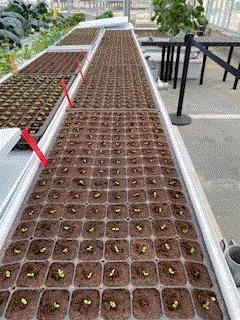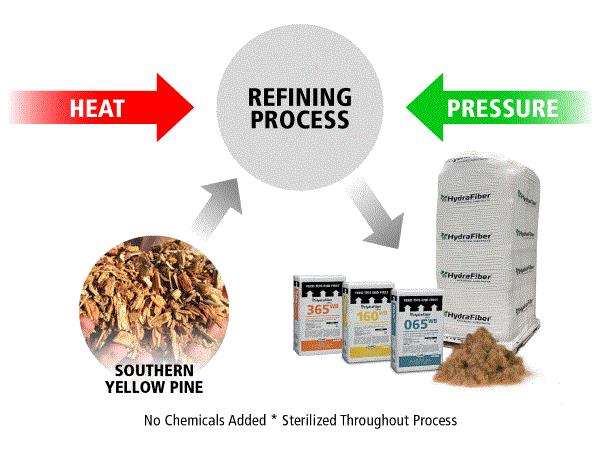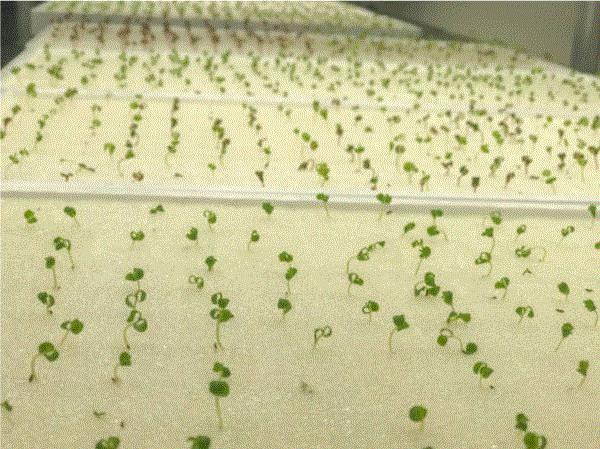Freight Farms Files for Chapter 7 bankruptcy
In the latest shakeup in indoor farming, Freight Farms, a company that outfits shipping containers for farming operations, has filed for Chapter 7 bankruptcy. Unlike other recent bankruptcies and closures, such as Plenty or Bowery, Freight Farms operates as a technology supplier rather than just a produce supplier. Their model functions more like a franchise, with independent farmers running their own farms under Freight Farms’ framework.

Freight Farms Farmhand Software
This bankruptcy creates significant uncertainty for farmers who rely on Freight Farms for everything from software and supplies to expendables and technical support. It serves as an unfortunate reminder to growers that understanding the ownership, right to repair, and knowing the mechanics of your operation is critical for long-term success.
The Ground Rules Have Changed—Hydroponic Substrates
Call it substrate, growing media or potting mix—but just not soil. I say that preemptively to avoid the wrath of soil folks, who (rightly) get flustered when horticultural substrates get lumped in with their beloved mineral-and-organic masterpiece.
This is a quick look into an innovative corner of horticulture that keeps surprising me with new products and approaches.

As a brief (and admittedly oversimplified) review, there are a few key factors to consider when selecting your substrate. If you’re growing quick-turn leafy greens in water culture systems like NFT or DWC, the choice is relatively simple. But for vine crops (tomatoes, peppers, cucumbers) or fruiting crops like strawberries, there’s more to think about than there is for the lettuce crowd. As we explore the latest substrates, keep the following in mind:
Particle size, Water holding capacity and aeration/oxygen
These are technically distinct factors, but in practice, they’re deeply interconnected. Adjust one, and the others tend to shift. For example, increasing fine particles in coconut coir can improve water retention but reduce oxygen availability. For crops that benefit from drying down between waterings, a substrate with high water-holding capacity can help buffer moisture swings and promote consistent growth.
Stability
Follow the advice Mustapha Mond gives on horticultural substrate: “Stability. The primal and the ultimate need.” I’m pretty sure he was talking about growing media, it’s been a few years since I read “Brave New World.”
In much of indoor growing, we want to avoid confounding variables. That means our substrates need to hold steady. With organic materials like coconut coir, peat moss or wood chips, it’s important they stay structurally stable over the course of a grow and don’t start breaking down or decomposing. Inorganic options like mineral wool, pumice or perlite don’t break down nearly as easily, so they’re often more predictable.
Logistics (Weight, shipping, ease of use, etc)
Sometimes, the non-growing parts of greenhouse operations matter most when it comes to profitability. Substrates like rockwool are plug-and-play right out of the package but take up a lot of space. Compressed coconut coir saves on storage but requires time and effort to hydrate and prepare. These tradeoffs should factor into your decision.
Certifications (organic, sustainable, etc)
Marketing matters. Consumer demand is trending toward organic and sustainable production, and if those values are part of your brand, it starts with what you grow in. Choosing a substrate with the right certifications helps you meet labeling requirements and customer expectations down the line.
So with those basics in mind, let’s dig into some of the latest news and products shaping the world of plant substrates. Whether you’re growing lettuce in DWC or tomatoes in high-wire systems, there’s something new worth knowing.

Profile Growing Solutions (PGS) HydraFiber & Blended Slabs
In a volatile world of trade, Profile Growing Solutions has developed a unique way to turn southern yellow pine into HydraFiber, a hydroponic substrate with properties that rival, or even surpass, peat and coconut coir. Launched over seven years ago, the trademarked product HydraFiber is lightweight, has excellent water-holding capacity and doesn’t require hydration to expand before use.

Like peat moss, HydraFiber comes with a naturally low pH, so keep that in mind when managing your fertigation strategy.
Profile has also introduced blended slabs that combine HydraFiber with coconut coir, designed specifically for vine crops. These are intended as a new alternative to traditional mineral wool slabs in greenhouse vegetable production, offering a renewable, domestically sourced option that’s gaining traction.
Polyurethane Foam Substrate
One interesting substrate worth mentioning is polyurethane foam, yes, the same material used in memory foam mattresses. Surprisingly, it shares many of the key qualities we look for in horticultural substrates: it’s inert and stable, has good water-holding capacity and is porous enough to support strong aeration.
While polyurethane isn’t organic, and its economic viability is still up for debate, it serves as a good reminder that horticultural substrates can emerge from unexpected places. (After all, coconut coir was once just a waste product.) As material science continues to evolve, we’re likely to see more novel substrates entering the growing space.

imenpol polyurethane horticultural substrate
If you’re considering trialing polyurethane foam, be sure to source it from a horticultural supplier, like imenpol, to ensure the formulation is clean and appropriate for plant growth.
No Substrates
Had enough of substrates altogether and wish you could skip them entirely? If you’re a leafy greens grower, that option now exists. Sinterra, whose name literally means “without earth,” has developed a reusable plastic pod designed to hold lettuce seeds in a way that allows them to germinate and grow without any substrate at all.

Sinterra's substrate free lettuce pod
These pods are easy to clean, reusable across multiple cycles, and can eliminate an input from your operation entirely. It’s a novel approach that could simplify workflows and reduce waste. Check out Sinterra’s website to learn more.
Non-Substrate Related Substrate Considerations
As I mentioned earlier, sometimes the non-growing aspects of substrates can be just as important, especially when it comes to sustainability. One area I’ve been watching closely is the reduction of waste plastics in controlled environment agriculture (CEA).
Jiffy has made real progress here. As of March 1 this year, they’ve increased the recycled content in their Growbags packaging from 20% to 40%. Just as importantly, they continue to take organic substrates and disease resistance seriously, ensuring their coconut coir remains healthy and reliable for greenhouse crops, while also improving the sustainability of the packaging itself. It’s a move toward better environmental stewardship that extends beyond what’s inside the bag.
New Faces In Horticultural Substrate
One of the last, but perhaps most important, aspects of choosing your substrates is the relationship with your supplier.
Oasis Grower Solutions is excited to welcome Paul Gaydos as the new Southeast Territory Manager. With over two decades of horticultural experience, Paul now oversees Oasis’s newest region in the Southeast. He brings extensive expertise in plant production, operations management, product development and growing trials.
Profile Products has also made an important addition to their team. Dr. Jim Owen has joined as the new Technical Services Manager. Dr. Owen holds a PhD from North Carolina State University and a Master’s in Environmental Science from the University of Rhode Island. With more than 25 years of experience in horticultural research and nursery/greenhouse production, he’s a valuable asset to the Profile team.
Find more about Jim’s new role and his expertise here: Profile Press Room

Dr. Jake Holley
Editor-at-Large
Inside Grower
This email received by 34,159 loyal readers!
Interested in advertising in Inside Grower? Contact Paul Black or Kim Brown and they'll show you how easy, effective and affordable it is.